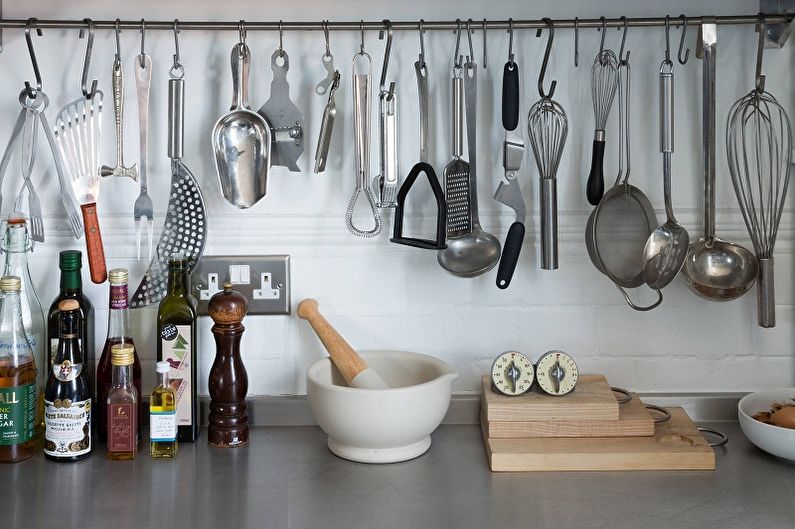
An optimally organized kitchen space ensures tasty food prepared in pleasant and comfortable conditions. While cooking, you shouldn’t have to waste time looking for spices, spoons, and other kitchen essentials. Sometimes, pull-out drawers or hanging cabinets might not be the best storage solution for kitchen items. A railing system serves as an excellent alternative or addition to them. By installing it in your kitchen, you’ll save energy, a significant amount of time, and space.
What are Railings?
The term might sound unusual, but its concept is straightforward. A railing is a rod, usually made of metal or another sturdy material, fixed to the wall. In kitchen setups, it often appears as a tube. This rail serves the purpose of hanging various kitchen tools. You can buy railings from any modern furniture store.
With railings, you can hang colanders, spatulas, and ladles efficiently. And with the added hanging components, even pot lids and graters. Such accessories enhance the utility of these rails. Kitchenware stores offer a vast array of containers for railings, perfect for organizing spoons and forks.
It’s no wonder the first railings started showing up in busy restaurant kitchens. They not only provide easy access to kitchenware but also speed up the process, all while conserving precious space. Many homeowners noticed their utility and began integrating them into their kitchens. Among the numerous advantages, the most significant include:
– Flexibility to install anywhere in your kitchen, regardless of its size or furniture arrangement;
– A wide range of additional accessories;
– Very affordable pricing;
– Easy and straightforward installation;
– Durability and resistance to heavy loads;
– Various styles of fixtures and holders for kitchenware.
You can enhance the functional platform of railings with dryers, hooks, lid holders, towels, and glass holders. As you can see, this set of undoubtedly useful accessories can transform simple metal bars into a versatile platform for the kitchen.
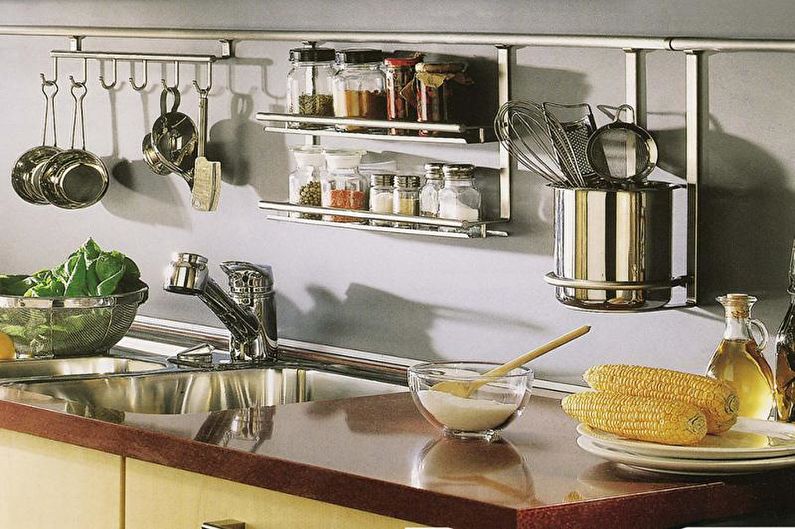

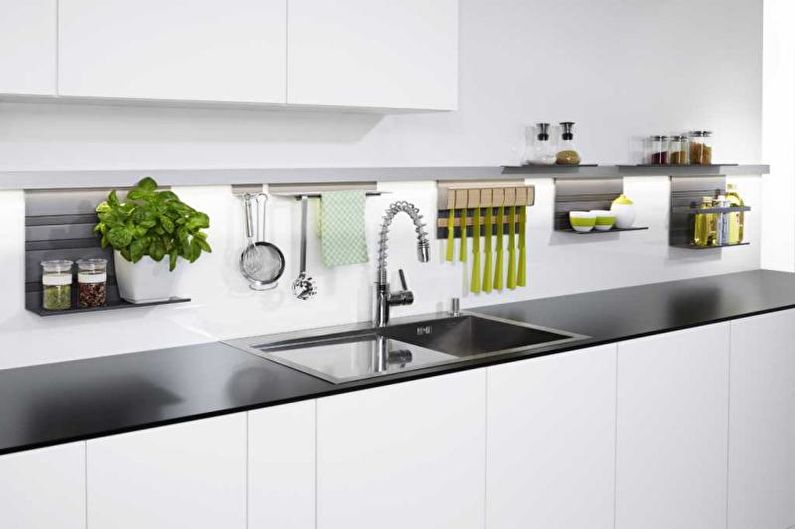
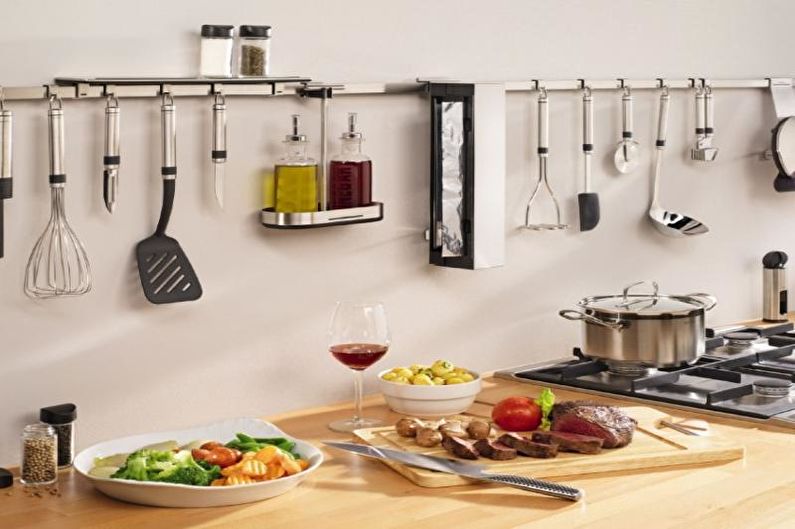
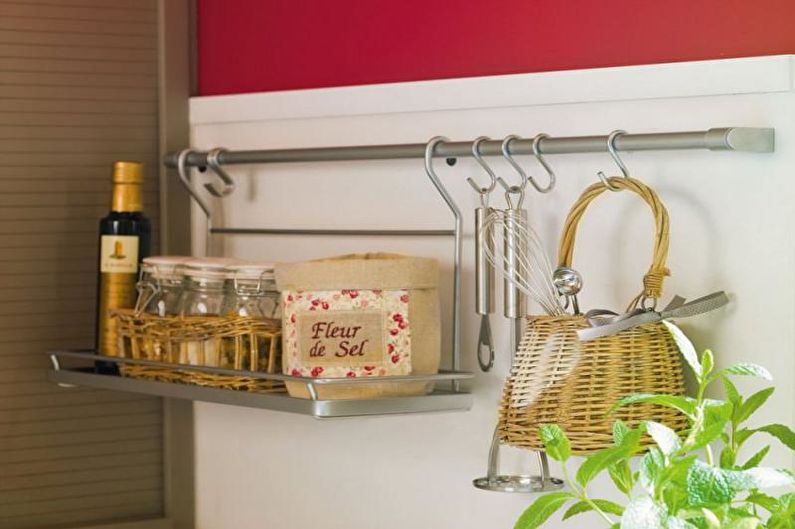
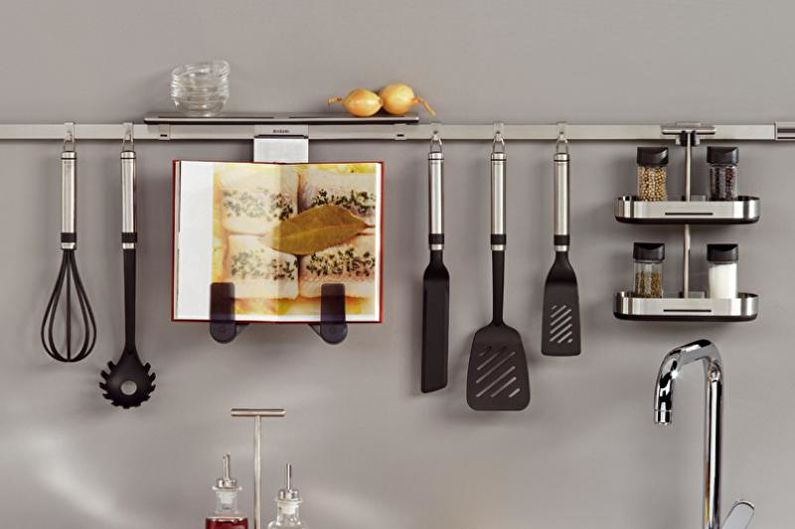
Types of Kitchen Railings
To cater to individual kitchen requirements, manufacturers produce various railing configurations.
1. Horizontal Railings. The most popular type. They are positioned in short sections or a continuous line along the wall. Special metal hooks allow placement of various kitchen accessories, as well as diverse holders for dishes.
2. Vertical Railings. Unlike the previous type, these railings attach to the ceiling and countertop or floor. They are often used on bar counters or at wall junctions. Shelves and stands for kitchenware are mounted onto these vertical rods.
3. Suspended Railings. As the name suggests, this railing type hangs from the ceiling using small cables or chains. They are frequently used over kitchen islands or bar counters.
Depending on the railing type, the mounting method in the kitchen is determined. Thus, vertical railings don’t require additional fasteners, unlike the suspended and horizontal versions. For them, holders are used, which are screwed to the ceiling or wall.
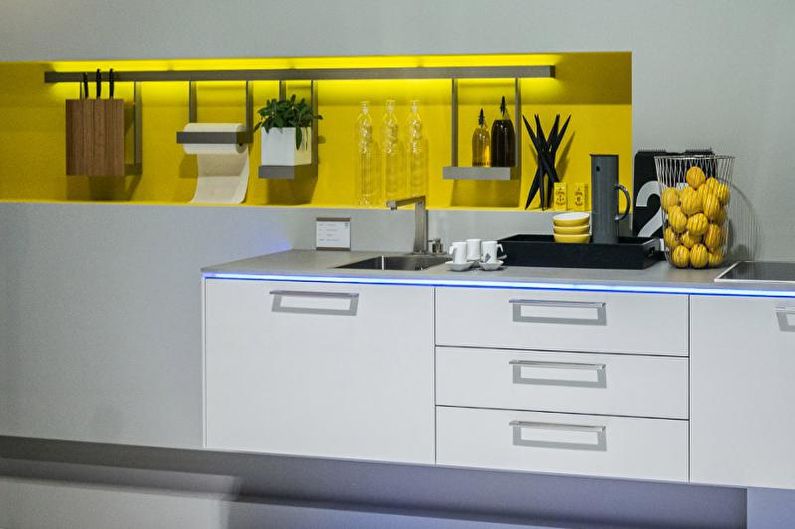
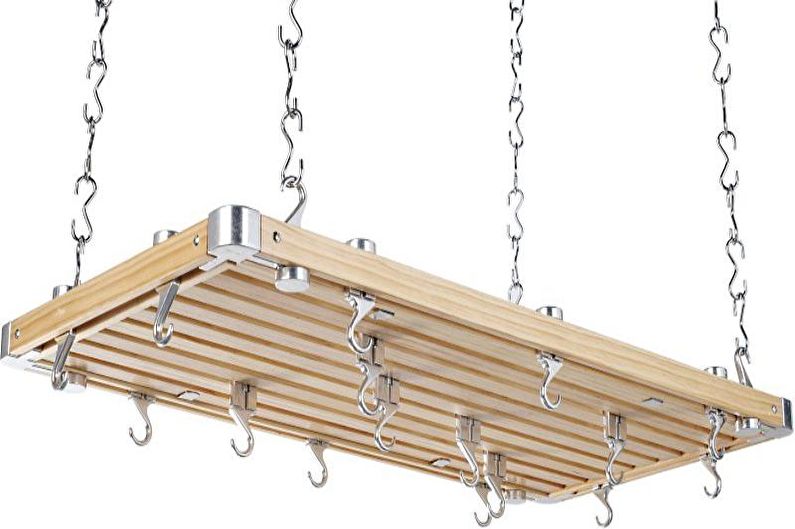
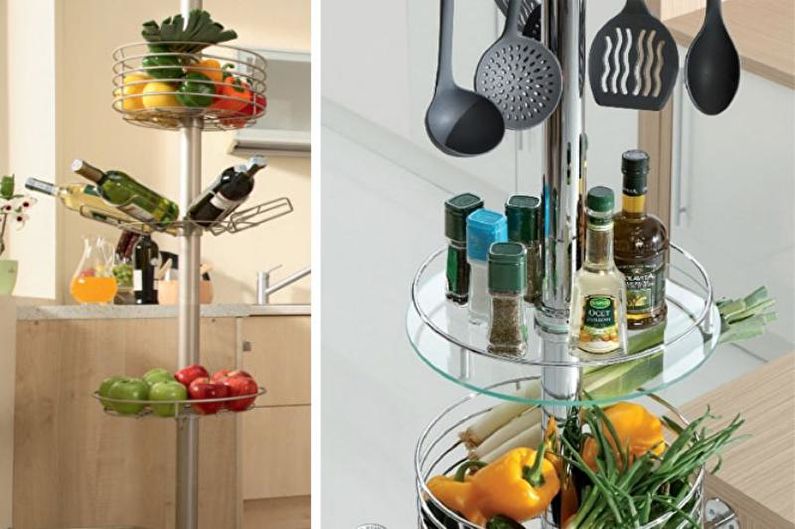
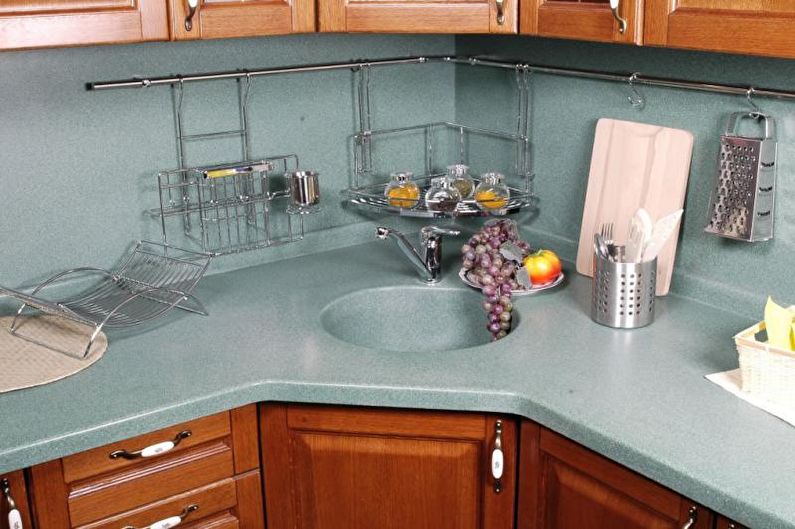
Materials
Railings are also categorized based on the materials used in their construction. Manufacturers offer hanging systems made of wood, stainless steel, nickel, brass, and aluminum. Most of them are chrome-plated. You can choose various options for your kitchen, depending on its style and overall design concept.
For railings to blend seamlessly, they are also coated in finishes matching copper, bronze, gold, and other popular colors. They not only allow matching the rail to the kitchen’s design but also add an extra layer of protection against corrosion and moisture.
Speaking of the variety of materials, their pros, and cons, it’s essential to consider the load they can handle. This aspect is vital for a kitchen storage system. Metal is practical and robust, but if you opt for an aluminum railing, it’s best not to overload it with heavy dishes or make it excessively lengthy. Stainless steel is considered the most practical material for railings as it’s sturdy and resistant to rust.
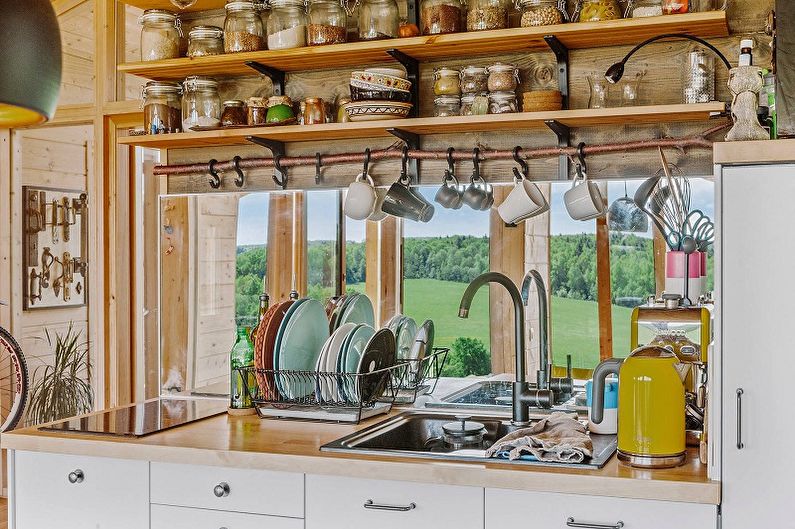
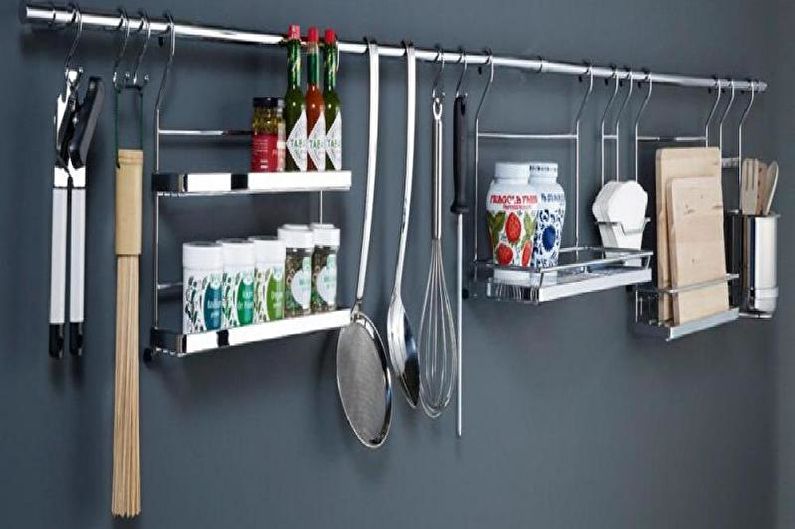
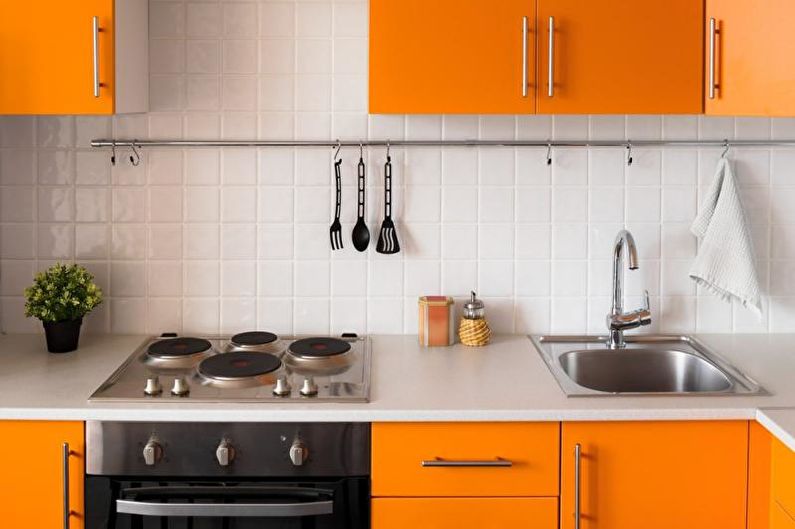
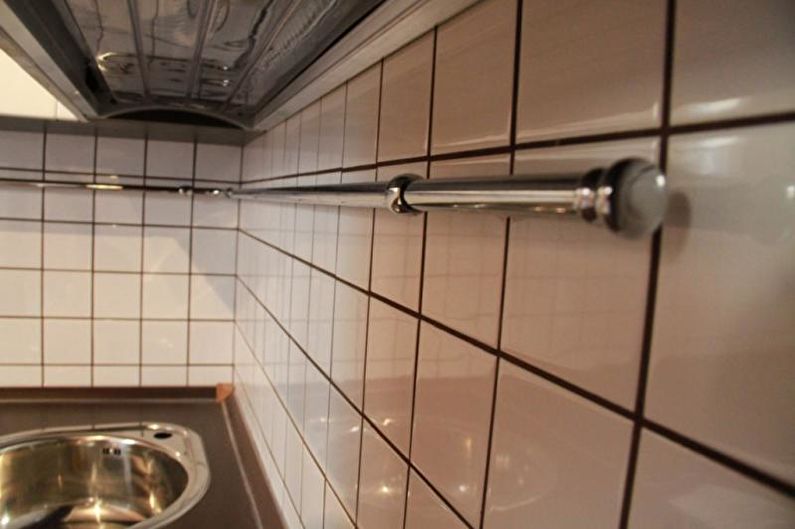
Railing Placement
When deciding on the location of the railings, consider the overall layout of the kitchen. Often, horizontal bars are placed above the kitchen workspace.
Regardless of the surface the bars are mounted on, install them at a height of 11.8 to 19.7 inches (30 to 50 cm) from the countertop. This is the most comfortable and practical height.
If you decide to place a bar under a hanging cabinet, keep a distance of 2 to 4 inches (5–10 cm) from its bottom. This way, the cabinet won’t interfere with access to kitchen utensils placed on the bar.
In some cases, it might make more sense to position the storage system on the sides of the cabinet. For kitchens with a corner layout, there are railings bent at a right angle.
If your kitchen has an island layout, the right decision would be to place the storage system above the island or kitchen table.
It’s great if the room size allows you to “play” with the positioning and geometry of the railings. Placing them at different heights creates an appealing and non-trivial decorative element. You can also perfectly zone the storage space in this way.
We’ve prepared a few more tips for those planning to install bars:
1. Mount the railings in the most convenient and accessible places. This way, you won’t feel inconvenienced while cooking, making the whole process more comfortable and optimized.
2. Depending on the overall concept of your kitchen, you can place several small bars near the work area or install a single long structure with a corner bend.
3. Don’t forget about kitchen safety. This especially applies to ceiling structures. Secure them as firmly and reliably as possible to prevent injuries.
4. The main rule for railing arrangement: items you use most often should be closer to the work area, and vice versa. Near the stove, place jars with spices, pot holders, and matches or lighters. Above the sink, it’s appropriate to place a towel and a shelf with cleaning products. If you use cling film or paper towels, buy holders with serrated edges – this makes them easier to tear.
5. To ensure ladles or spoons don’t get greasy, don’t hang them above the stove.
6. You can adapt a slanted shelf as a holder for a kitchen book. This makes the cooking process even simpler and more engaging.
Well-thought-out and skillfully constructed railings minimize the homeowner’s efforts, making the cooking process very fast and extremely enjoyable.
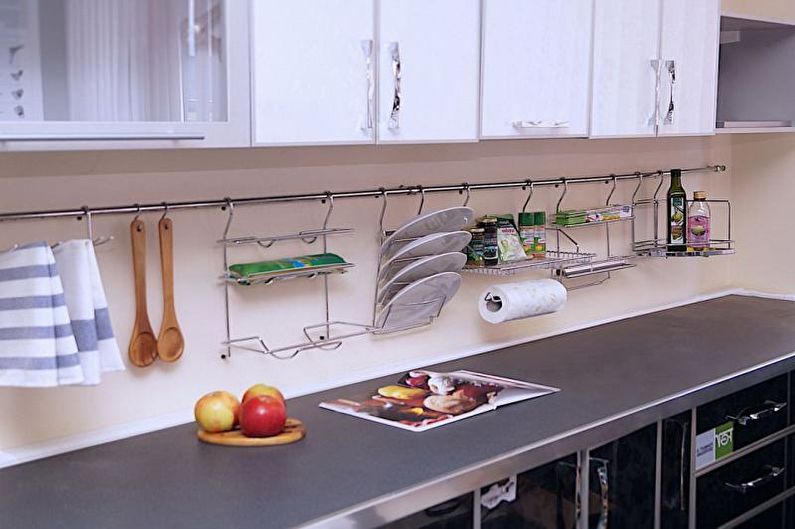
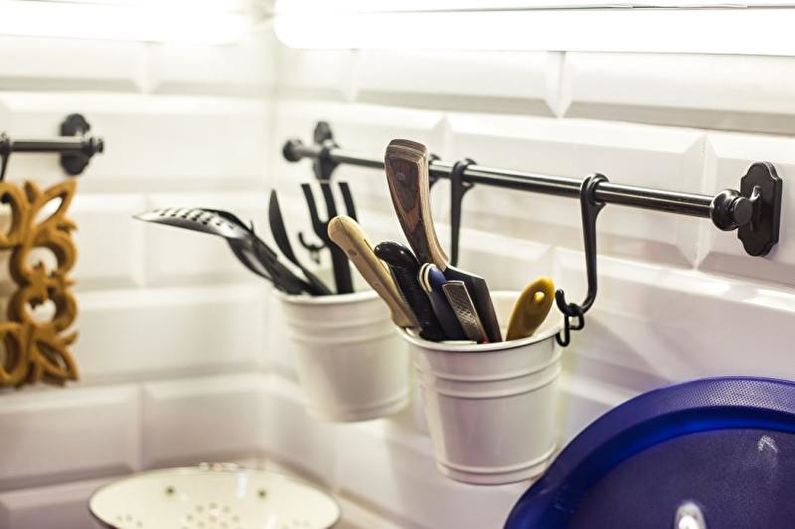

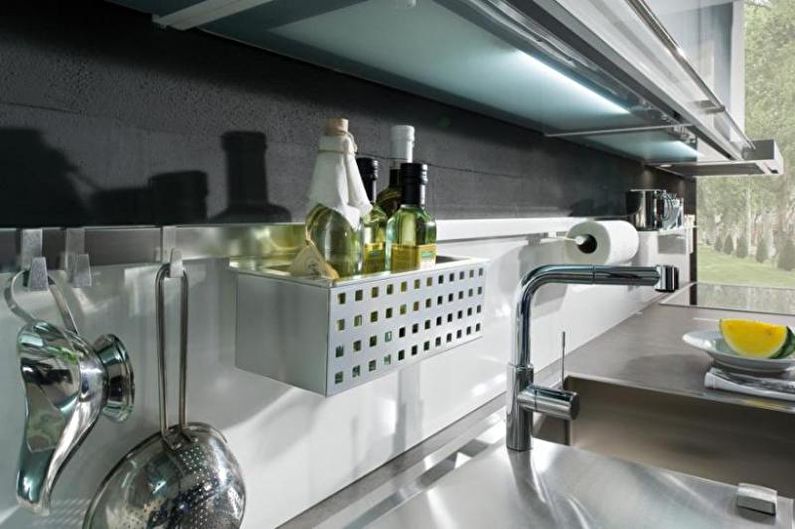
Choosing Rails to Match Your Kitchen Style
Despite the usefulness of rails, it can’t be said that they fit every style. Japanese style or minimalism exclude extra details, so such a storage system might seem out of place.
On the other hand, styles like Californian or Italian see metal rails as quite harmonious, especially combined with other characteristic decorations. Rustic styles also advocate for using rails for storing dishes and kitchen accessories. For a traditional or retro style, rails finished in bronze or gold are suitable.
For a high-tech style, you can balance it out with thin metal rails. Just ensure you don’t overload the interior with an abundance of rails.
A rustic kitchen can be adorned with wooden rails, which can hold various spoons, oven mitts, or small jars for spices.
Unleash your imagination, study the style of your chosen kitchen, and you’ll easily find a way to incorporate rails.
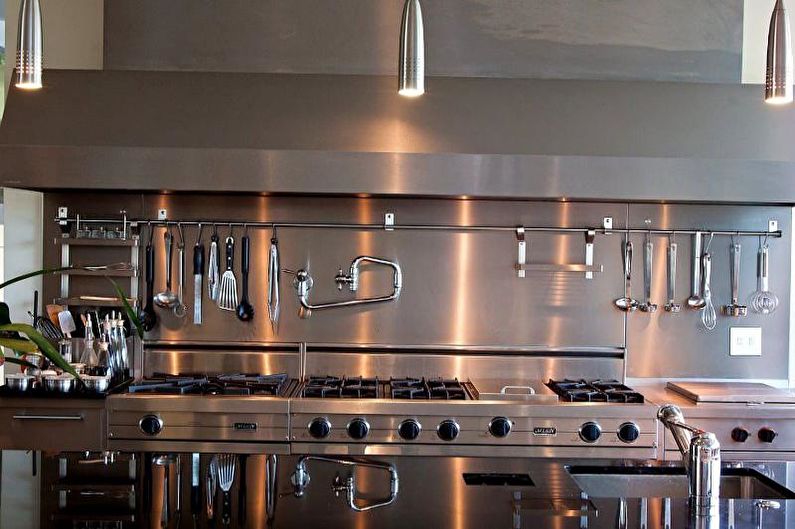

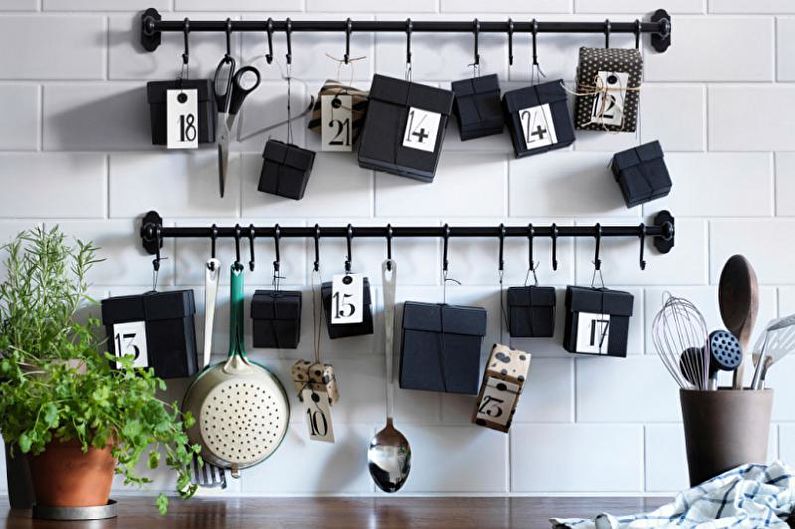
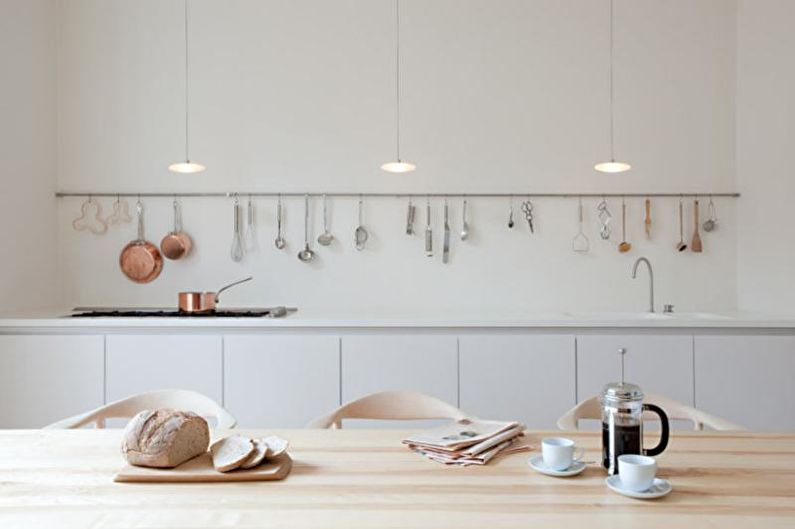
Rail Accessories
Hooks. Common components of hanging systems are hooks. They’re great for hanging spatulas, kitchen scissors, mugs, and ladles. You can adjust the whole system to your liking, which is what makes it so convenient.
Shelves with mesh. They’re used for both small items, such as spice jars and cleaning products, as well as larger items – like mixers, blenders, and coffee grinders. If you enjoy flowers, you can also place them on these shelves.
Holders. Perfect for whisks, spatulas, or other cooking “tools.” In kitchen stores, you can find towel holders, special bread boxes, or magnetic knife holders. Essentially, almost all possible kitchen appliances and accessories can be placed on rails. Rails are an excellent way to decorate the kitchen with beautiful and stylish dishes, as well as other delightful details.
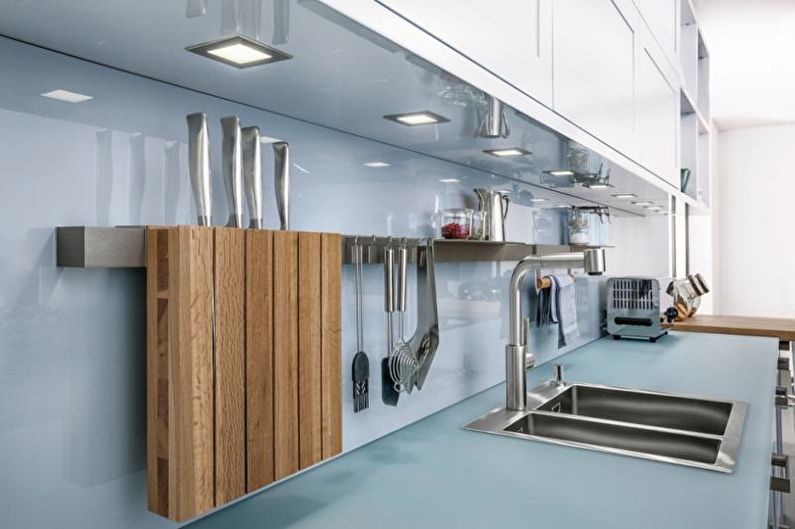
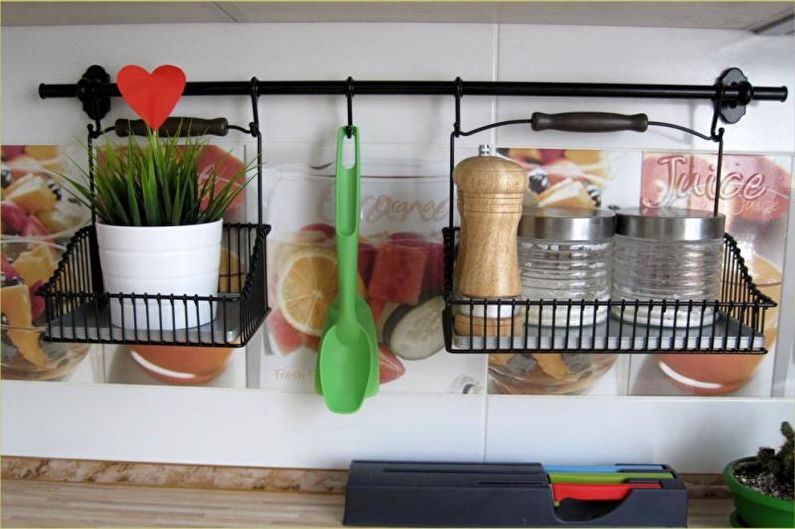
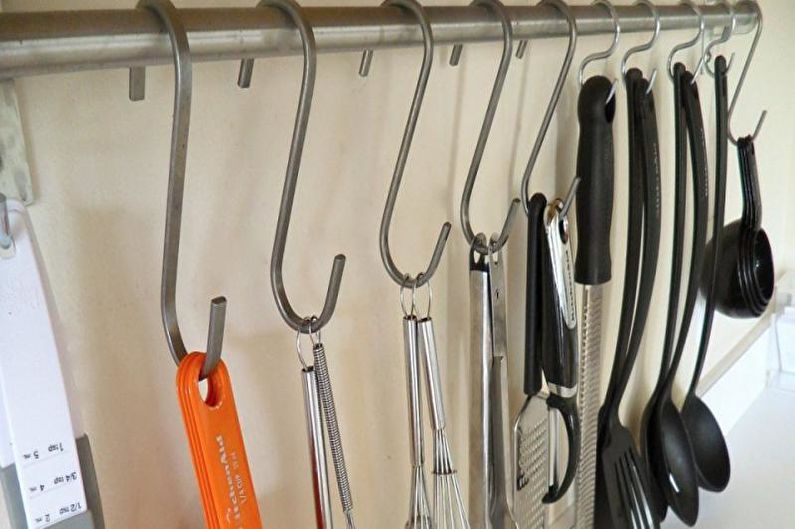
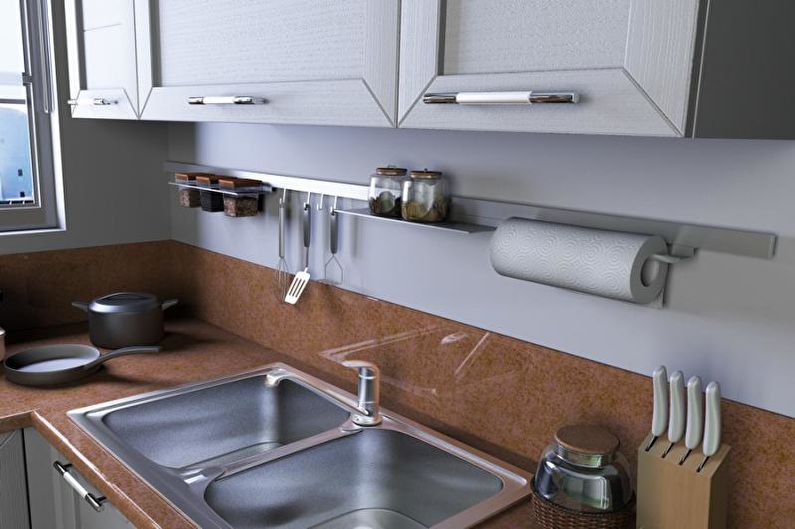
Kitchen Rails
To visually demonstrate the benefits, beauty, and harmony of rail storage systems in various kitchens, we’ve prepared a photo collection filled with numerous amazing ideas and configurations. Find the perfect rail option for your kitchen. Enjoy browsing!
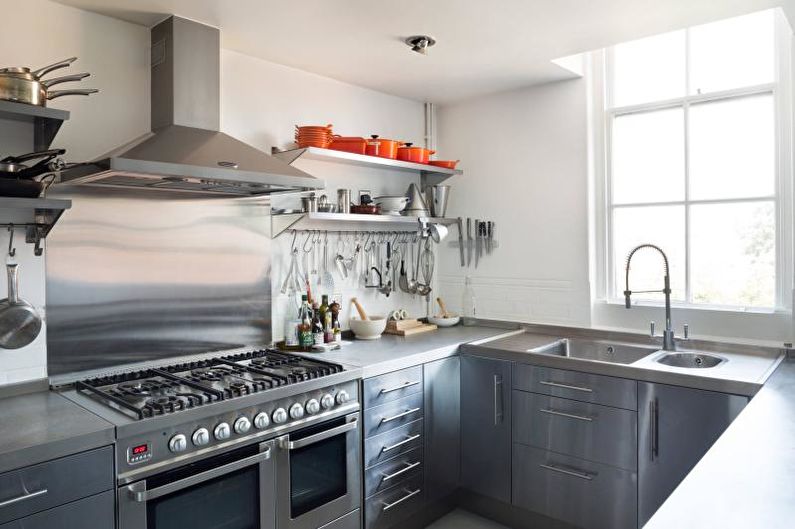
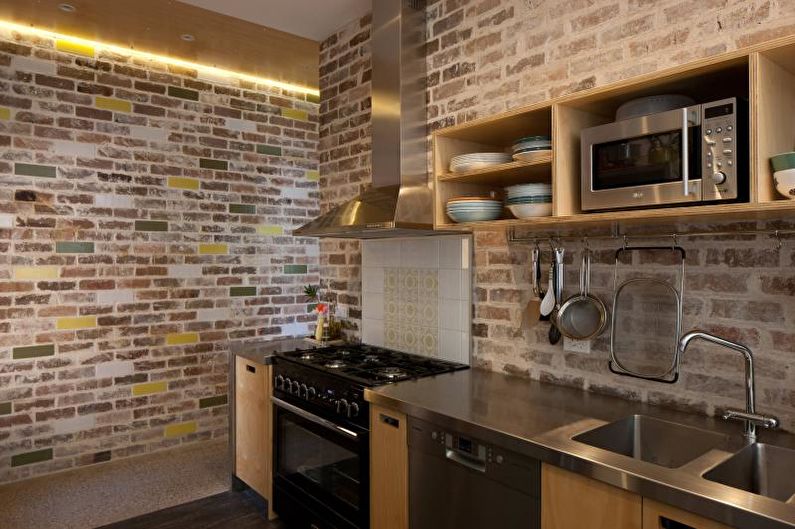
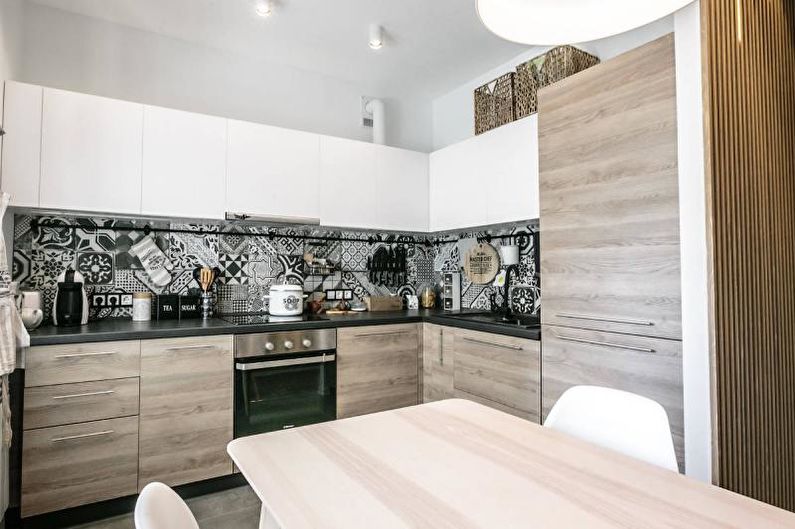
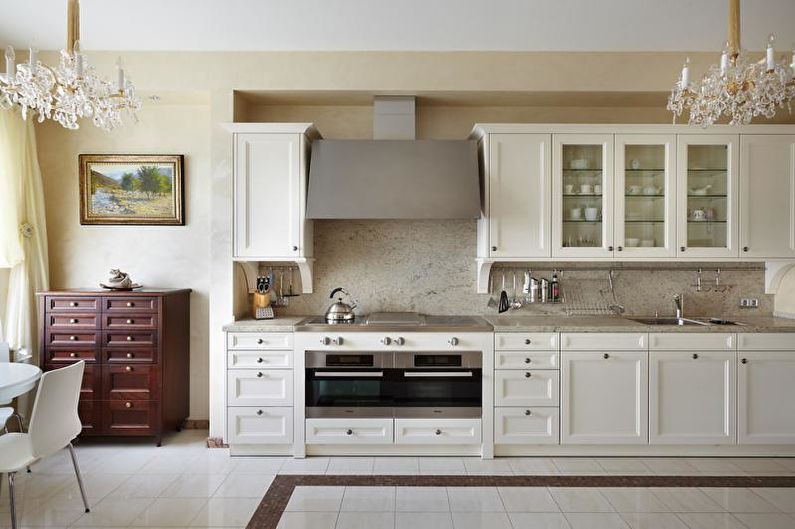
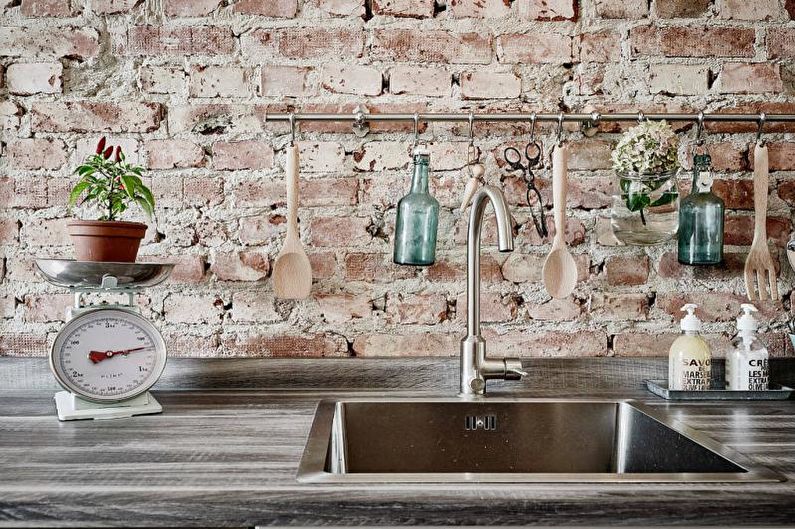
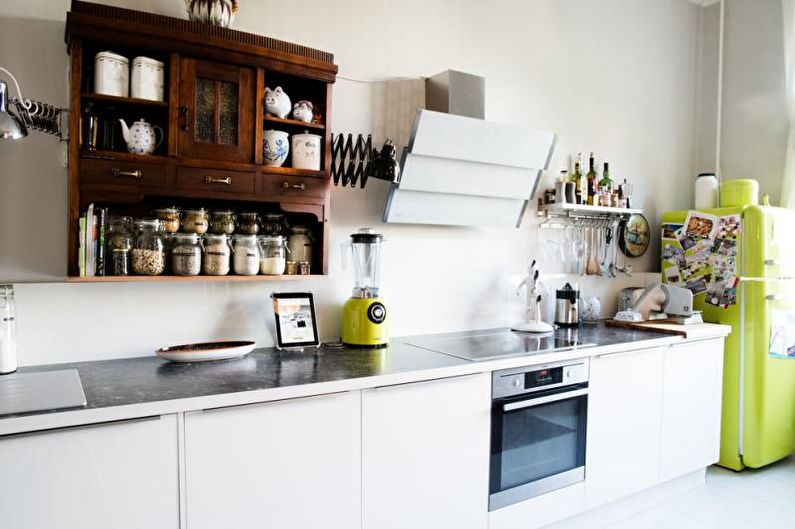
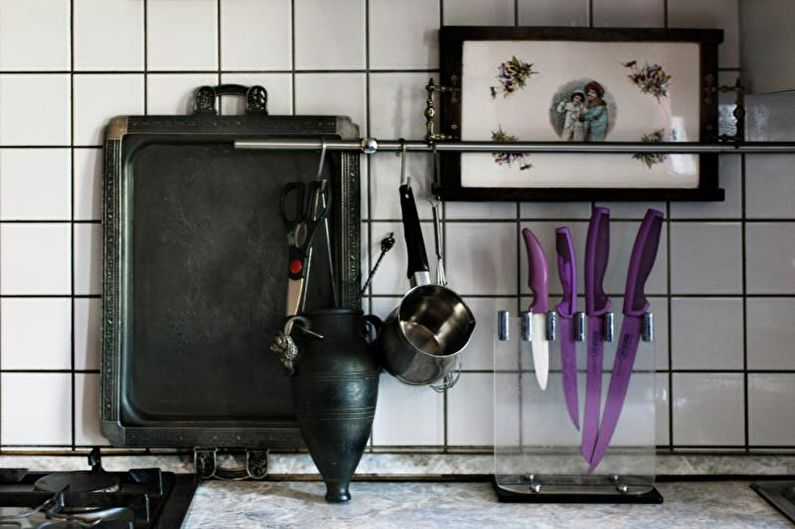
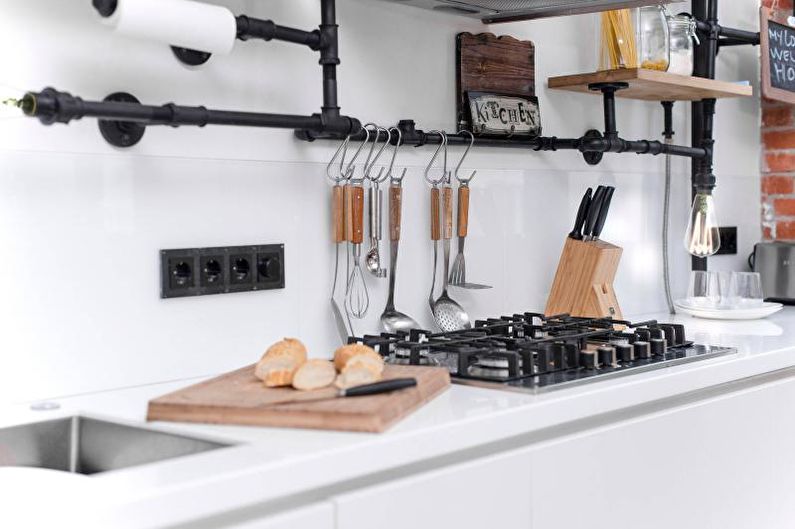
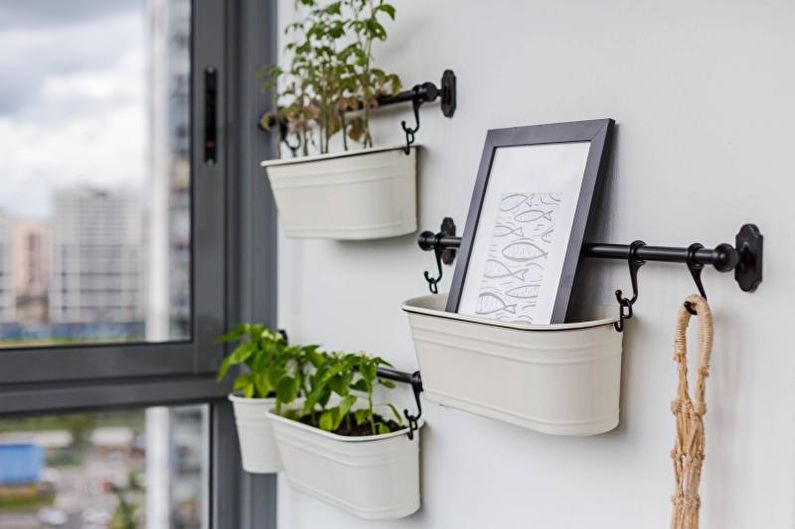
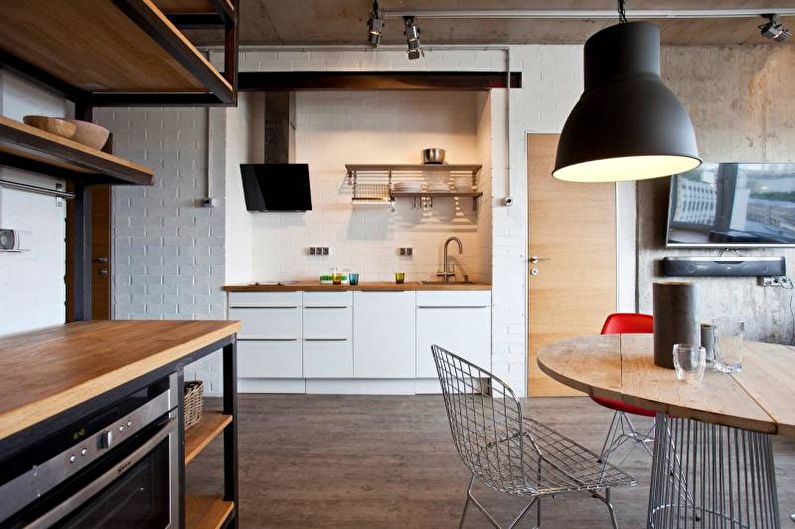

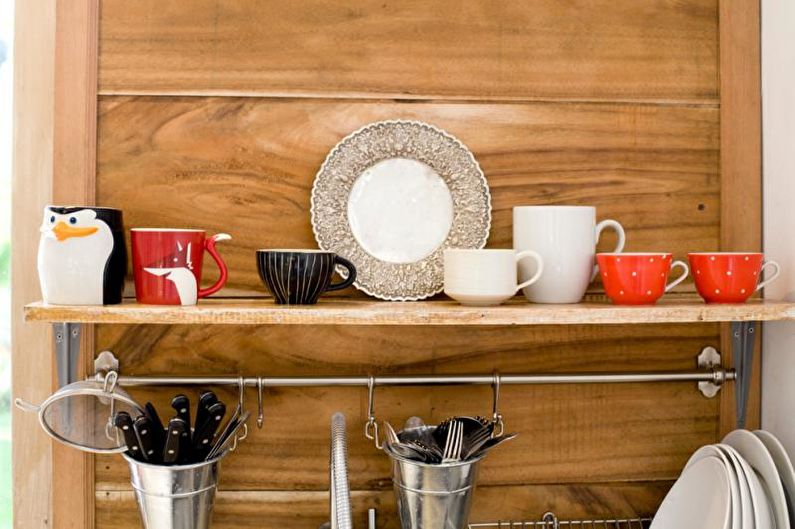
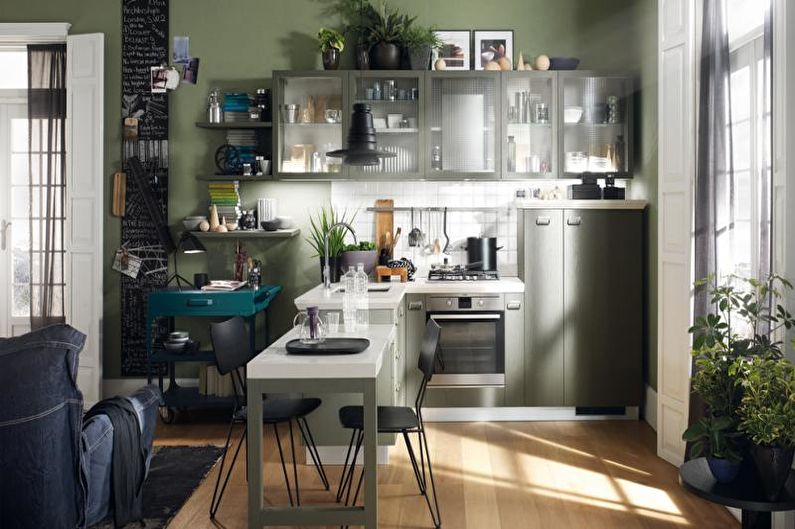
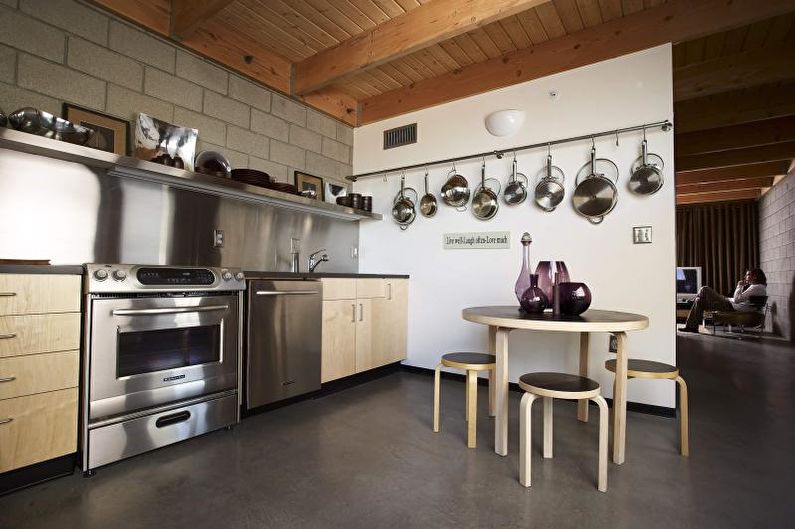
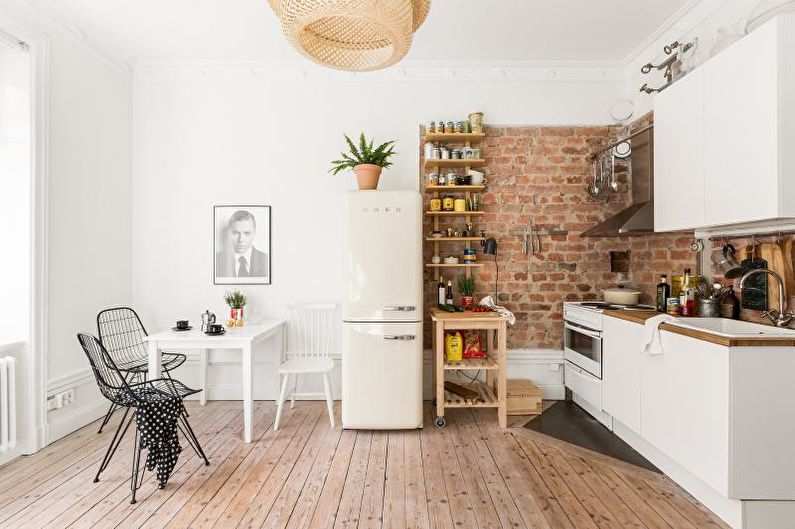
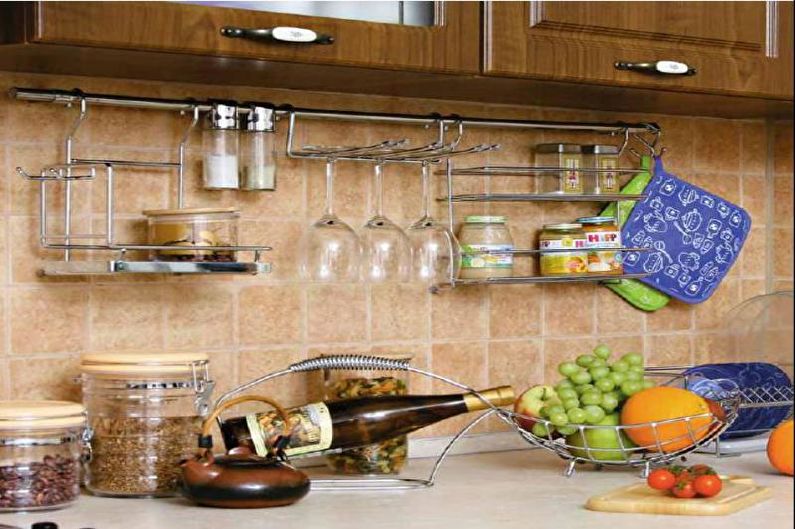

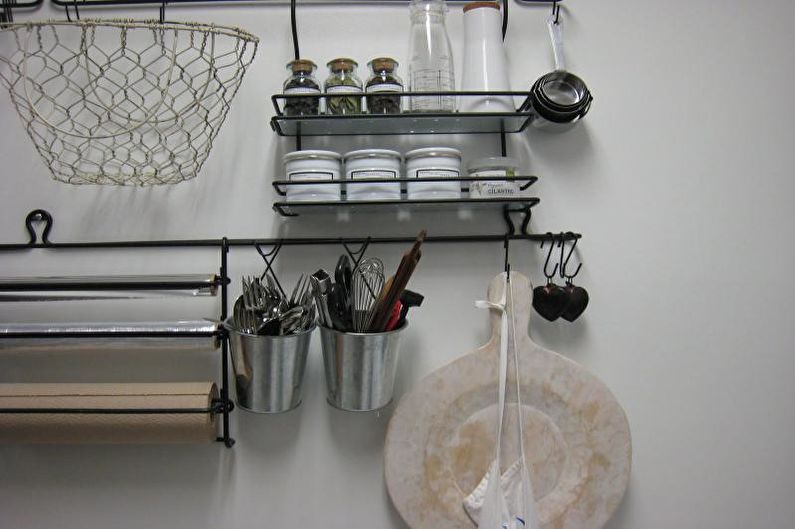

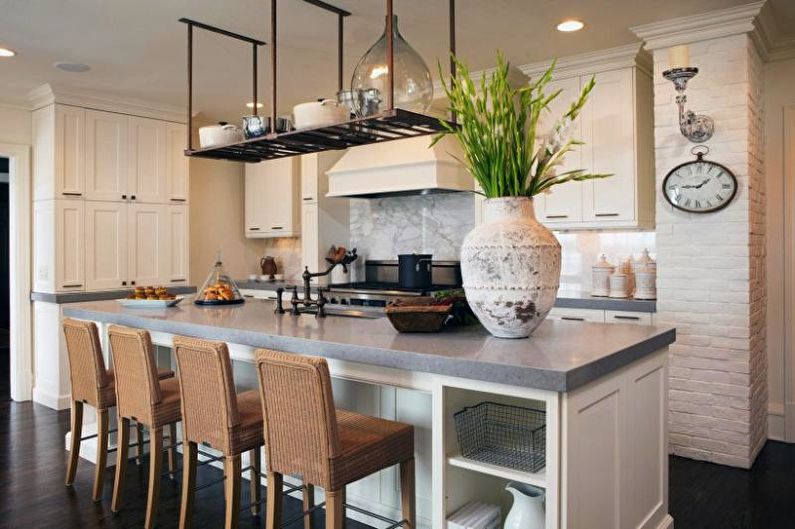
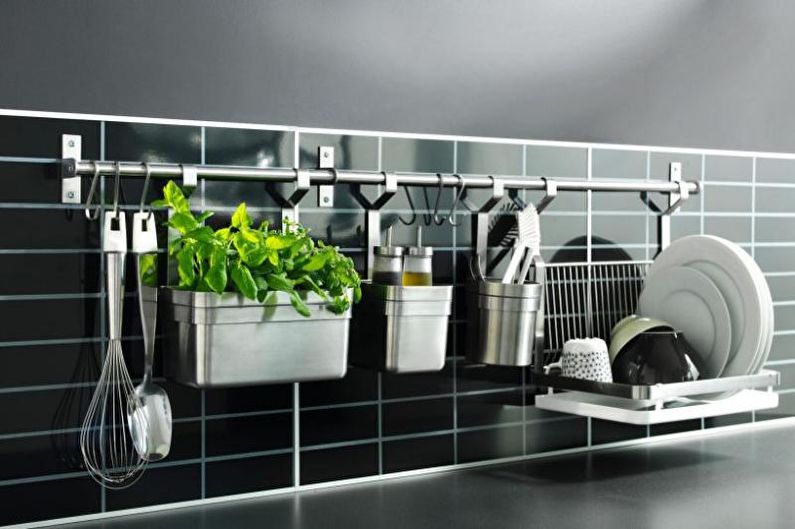
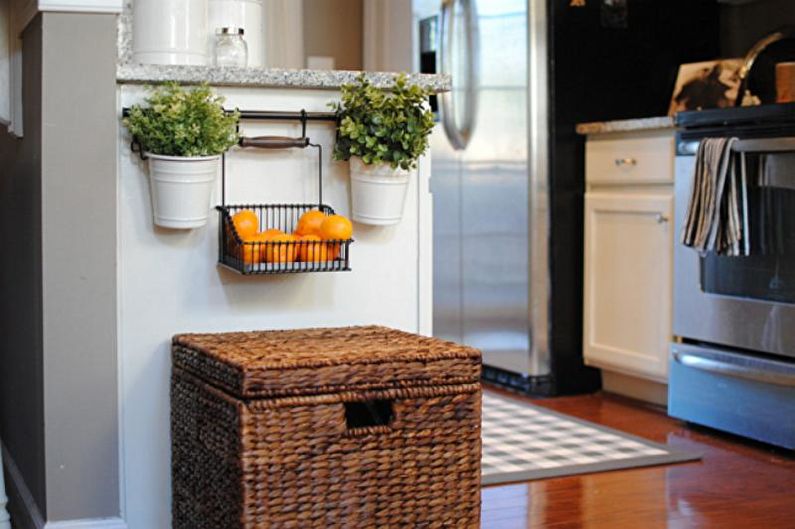
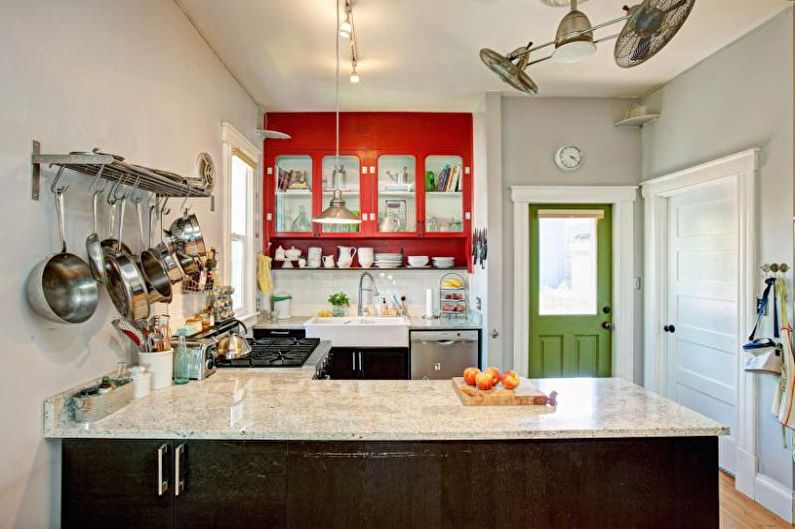

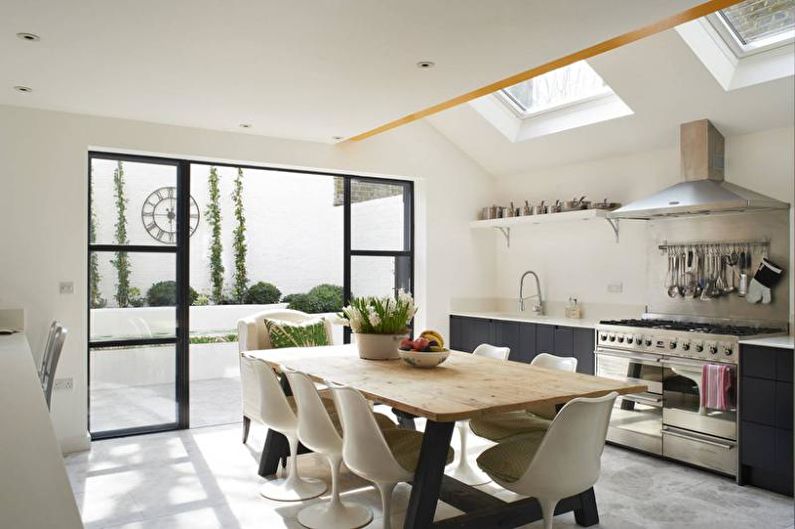
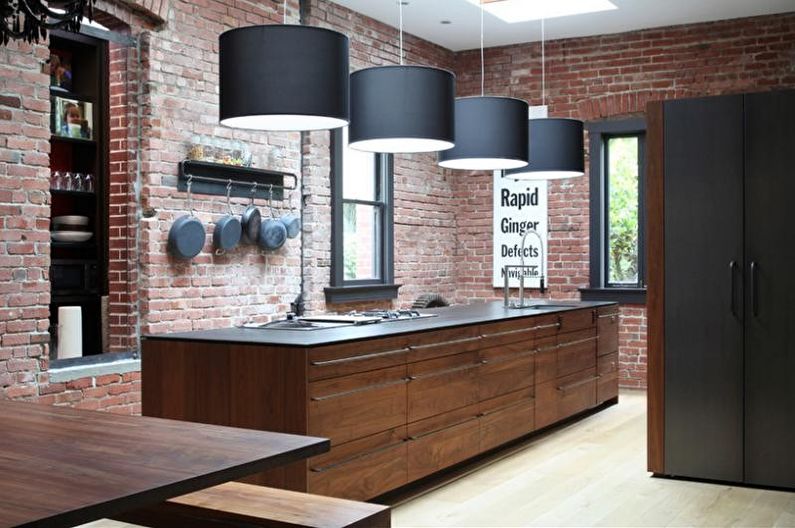
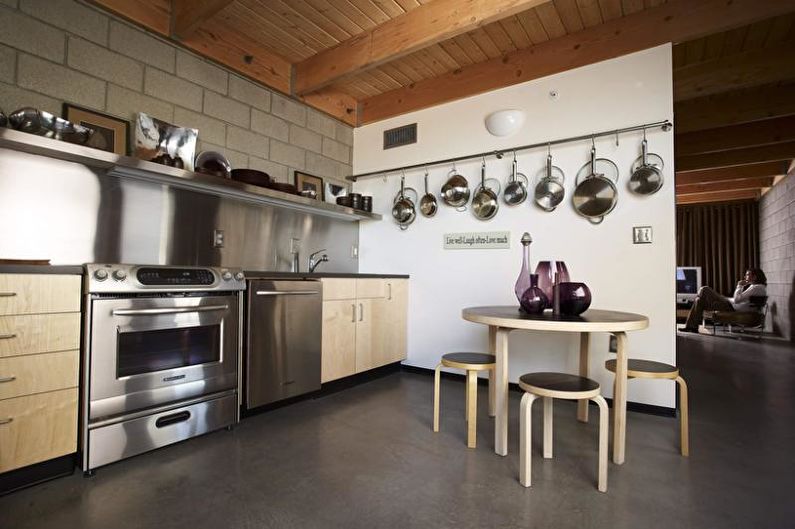
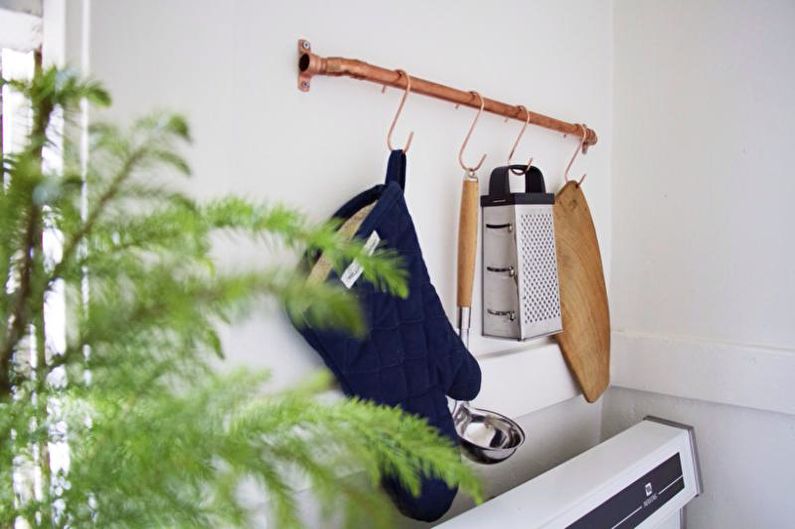

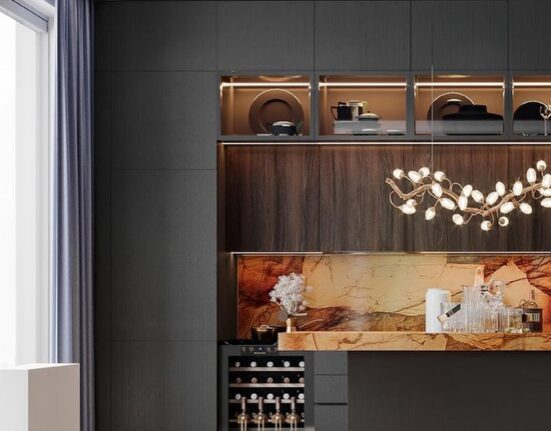
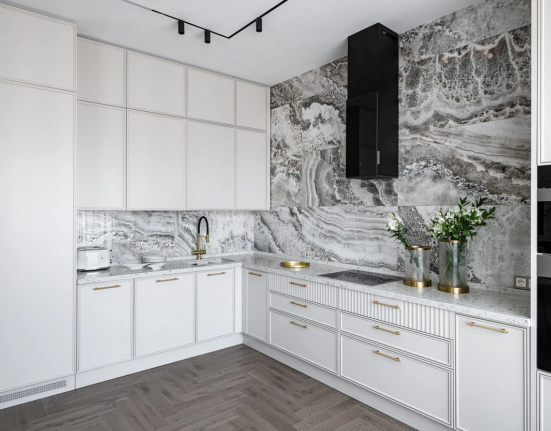
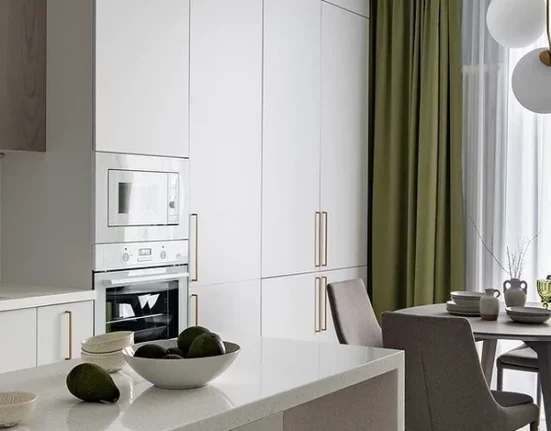

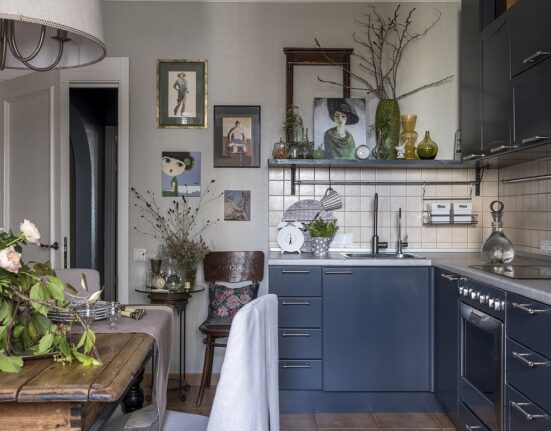
Leave feedback about this